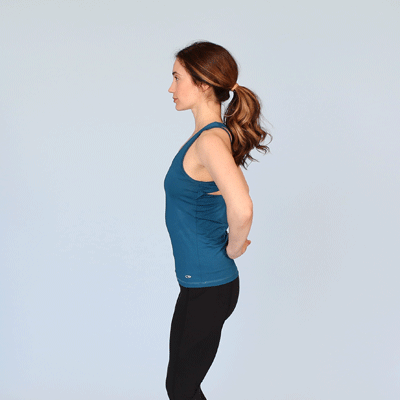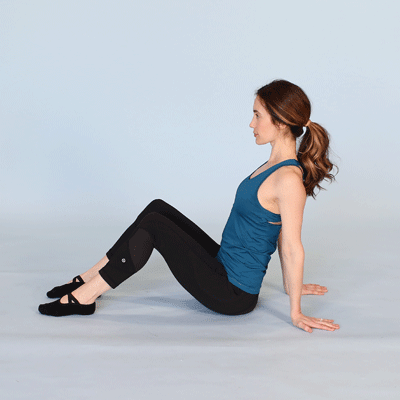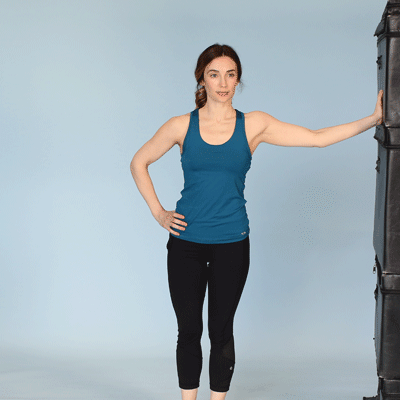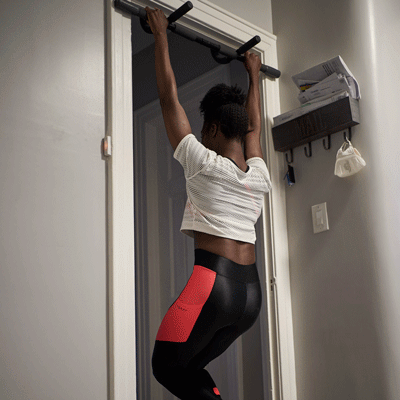Discover 5 bicep stretches to enhance your upper-body workout. Ideal for all fitness levels, these stretches also target your chest and shoulders. Start now for a comprehensive stretch session!
Biceps stretches can complement any upper-body workout 💪 .
Whether you’re new to the #FitFam (welcome!) or you’re a seasoned pro, these five moves will give you a top-notch stretch sesh.
These five biceps stretches are great for any fitness level. Here’s a rundown of each one.
1. Standing biceps stretch
This will stretch not only your biceps but also your chest and shoulders.
To do a standing biceps stretch:
- Interlace fingers behind your back.
- Keep hands at the base of your spine.
- Straighten your arms.
- Lift arms as high as you can.
- Hold for up to 1 minute.
Repeat 1–3 times.
2. Seated biceps stretch
This one’s similar to the standing stretch but should give you a little more arm extension.
To do a seated biceps stretch:
Repeat 2–4 times.
Alternate version:
- Stand and place your hands on a flat surface behind you.
- Squat halfway down until you feel the stretch.
Pro tips:
- Avoid arching or slumping your back.
- Keep your spine, neck, and head in a straight line.
3. Wall biceps stretch
This is another one you’ll feel in your chest and shoulders.
To do a wall biceps stretch:
- Press your right palm into a wall.
- Slowly turn away from the wall.
- Hold for up to 30 seconds.
- Repeat on the left side.
Pro tip: Move your hands up or down until you find the sweet spot.
4. Doorway biceps stretch
In addition to stretching your biceps, this is a great way to open your chest. You can do this with one arm at a time or with both at once.
To do a doorway biceps stretch:
5. Overhead holding (hanging) biceps bar stretch
This stretch works several areas at once. You’ll feel the burn in your core, upper back, shoulders, triceps, and biceps.
To do an overhead holding (hanging) biceps bar stretch:
- Use a step, chair, or bench to reach a secure bar.
- Grip the bar firmly with both palms facing away from you.
- Keep hands shoulder-width apart and arms straight.
- Hang for up to 1 minute.
- Carefully press your feet back onto the step.
- Repeat up to 3 times.
Pro tips:
- Safety first! Make sure the bar is super secure before you do this stretch.
- Don’t leap up to grab the bar — it increases your risk of injury.
- Start slow. Stretch for 10–15 seconds and work your way up to a minute over a time.
When done correctly, biceps stretches help:
- improve posture
- relieve tension and tightness
- enhance athletic performance
- improve your range of motion
- increase flexibility and strength
- reduce your risk of injuries (like pulled muscles, joint irritation, or tendon or ligament tears)
Even master stretchers can make a mistake. Watch out for these common biceps blunders:
- Bouncing. If you’re doing a deep stretch, you might move or bounce your bod to ease the tension. This prevents your muscles from relaxing, which could lead to a muscle or tendon tear.
- Not warming up. Don’t go into a stretch cold — it can cause a rip or tear. Always do a warmup first. This could be a 10-minute light cardio sesh, but for some folks, it might take longer.
- Incorrect positioning. Poor positioning can make you miss the muscle you’re trying to stretch. A good way to tell if your form is on fleek is to feel the muscle with a free hand. It should feel tight during the stretch and looser afterward.
- Pushing past your limit. You can’t become a contortionist overnight, fam. A stretch might feel slightly uncomfortable, but it should never be painful. Keep your flow slow and work your way up to deeper ranges of motion.
- Stretching an injured muscle. Stretching an injured muscle may not be the best idea, depending on the nature of the injury. Even if you feel OK that day, consult a doctor or physical therapist before attempting to stretch an injured area, because it may do more harm than good.
Yes, it’s possible to flex your stretch too far. Stretching too rigorously or too often can lead to injury.
Overstretched muscles can cause joint instability or create tiny tears in tendons or ligaments. It’s possible to put excessive pressure on your joints as well, which can cause injury.
If you do wind up with a stretch-related ouchie, some good old RICE should do you nice:
- Rest. Give your bod time to bounce back. Recovery time can depend on factors like gender, weight, age, and type of injury. But it’s always better to play it safe. Wait to resume physical activities until the pain is totally gone.
- Ice. Apply a cold pack or bag of ice to the injured area. (A bag of frozen peas will do in a pinch 😉.) It can help manage pain and bring down swelling. Just be sure to cover your skin with a towel to prevent icy irritation.
- Compression. If you have an injured neck, knee, elbow, ankle, or wrist, you might want to brace yourself. Compression can help prevent further injury. It can also help manage pain or swelling.
- Elevation. This obvi isn’t possible if you have a back attack, but it works well with limbs. Elevate the injured area above your heart.






